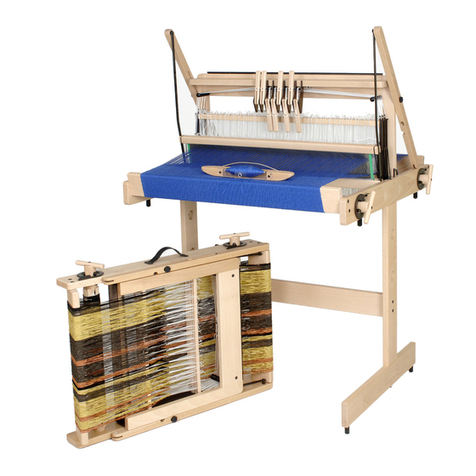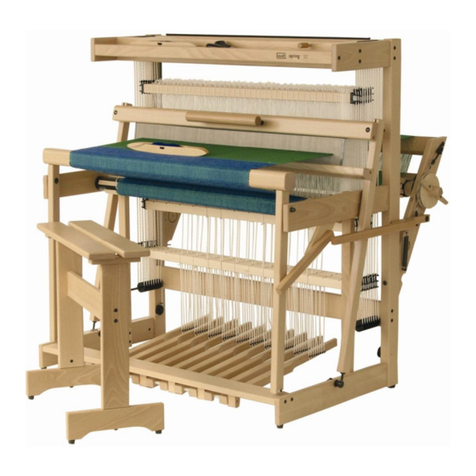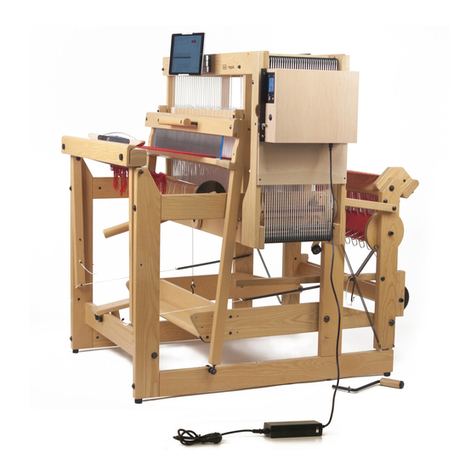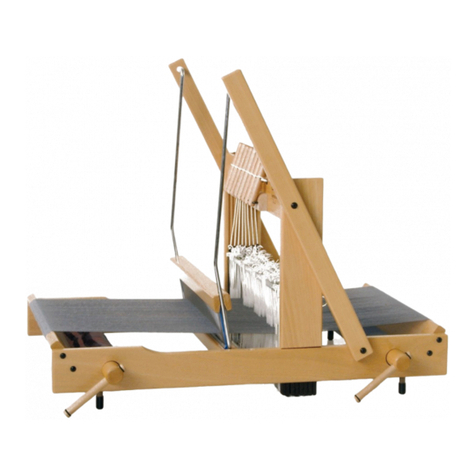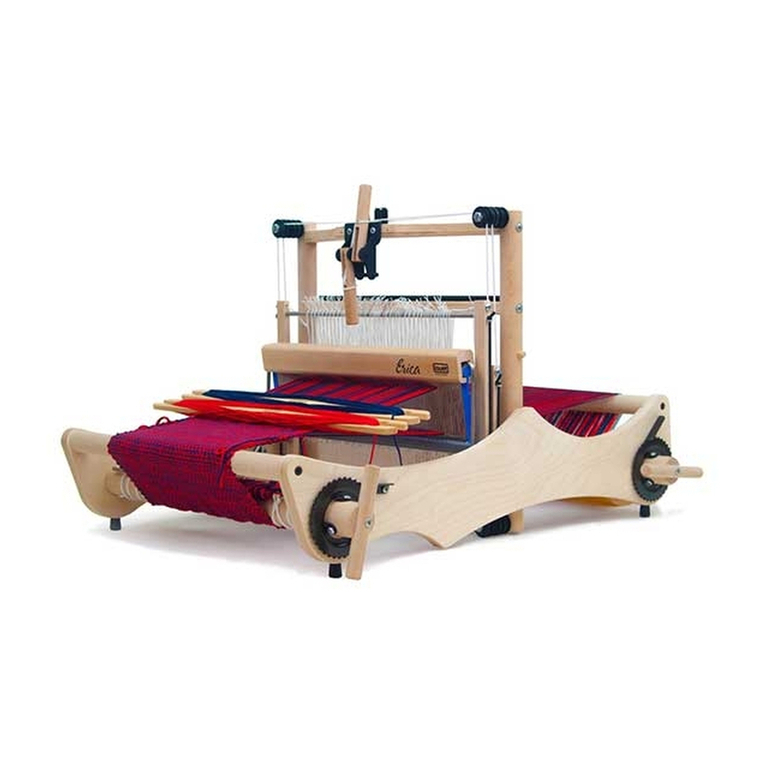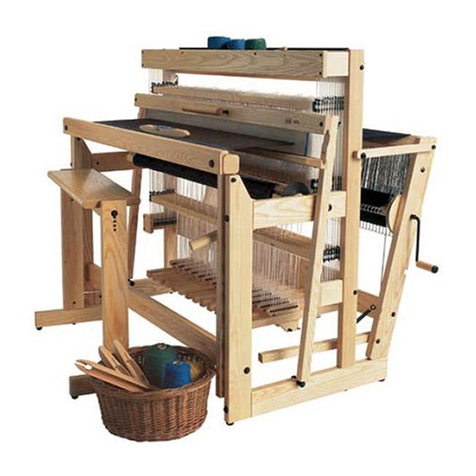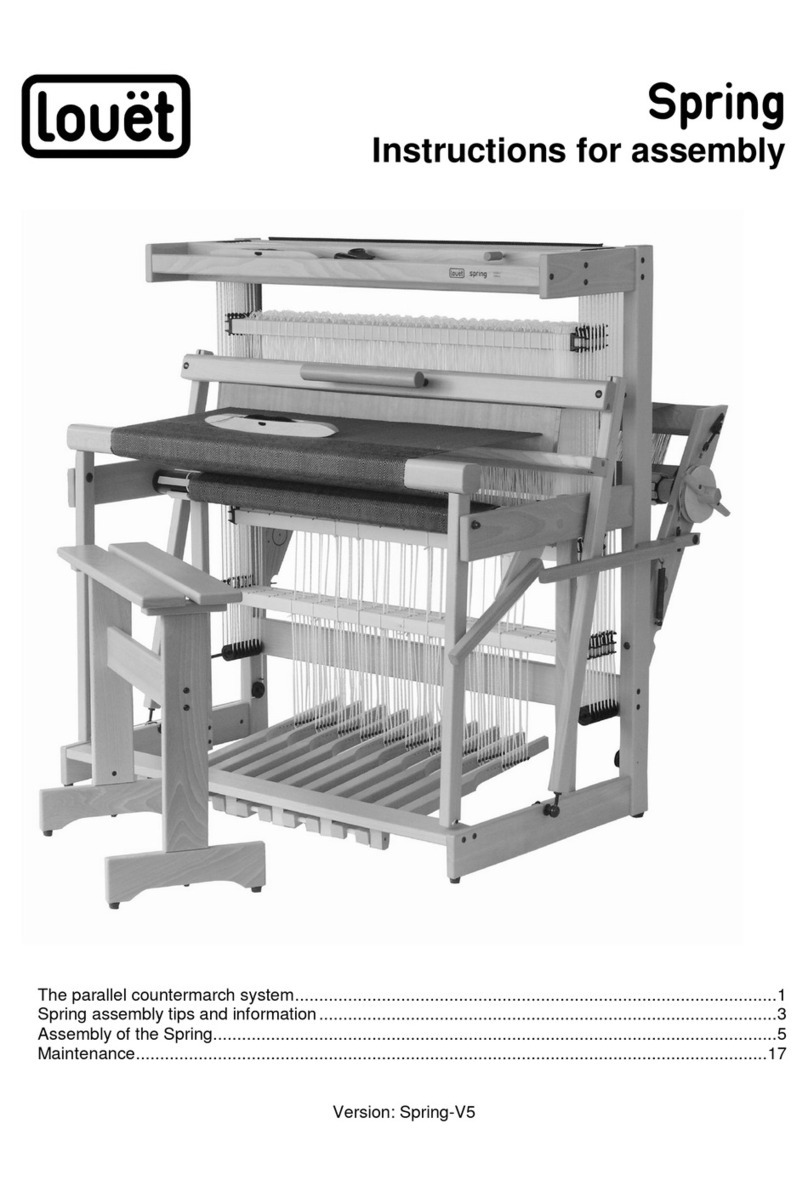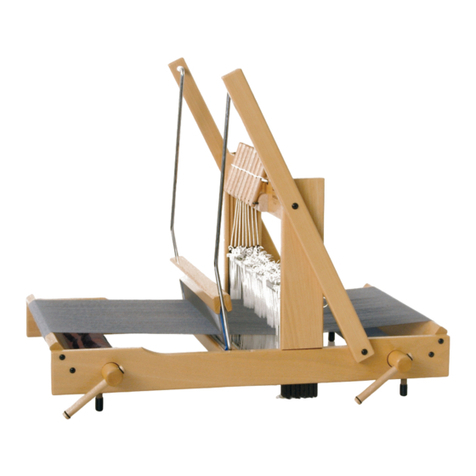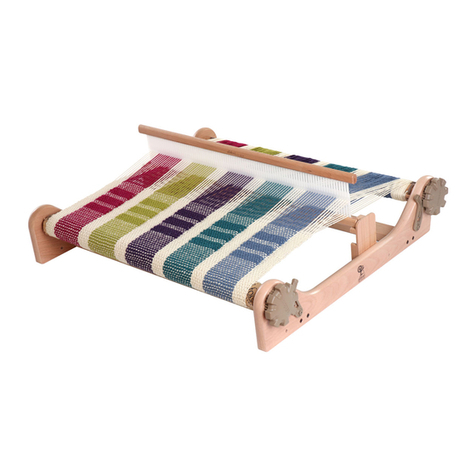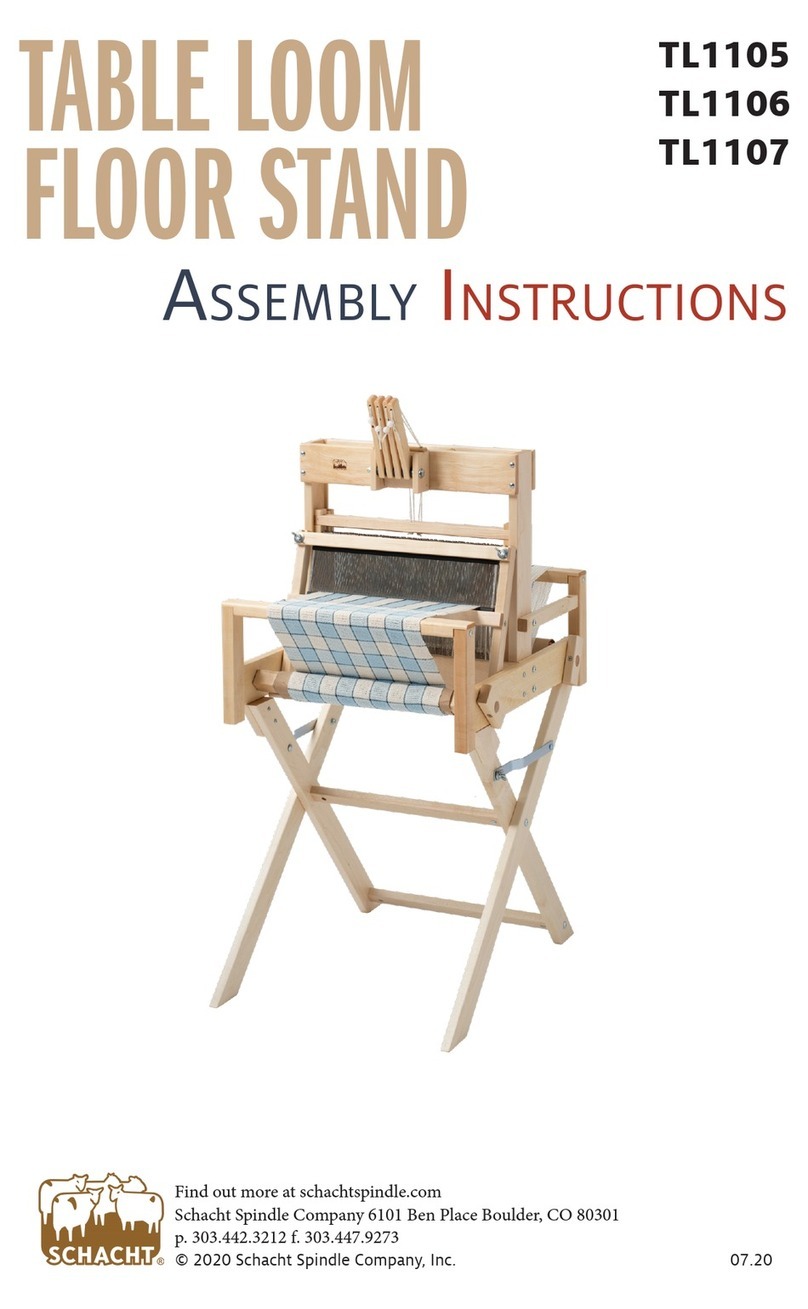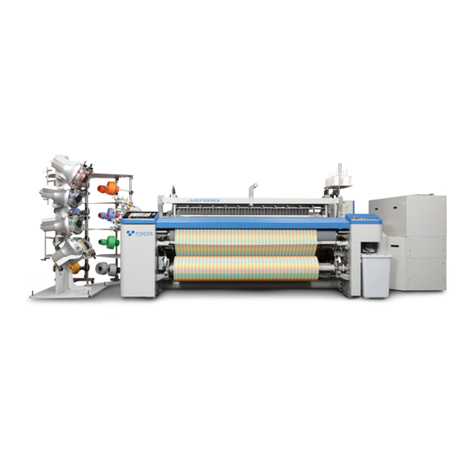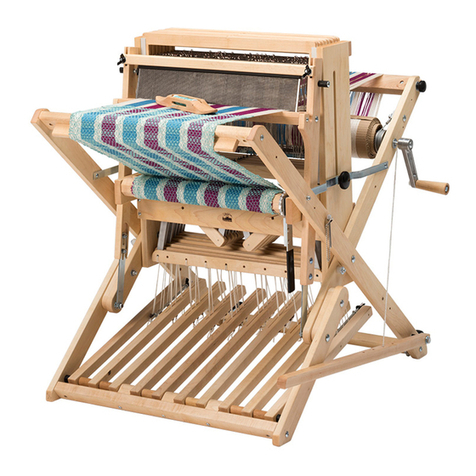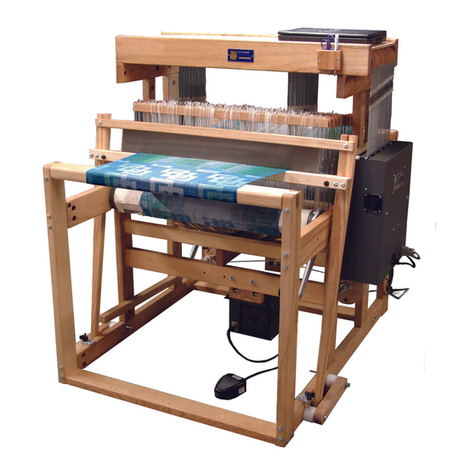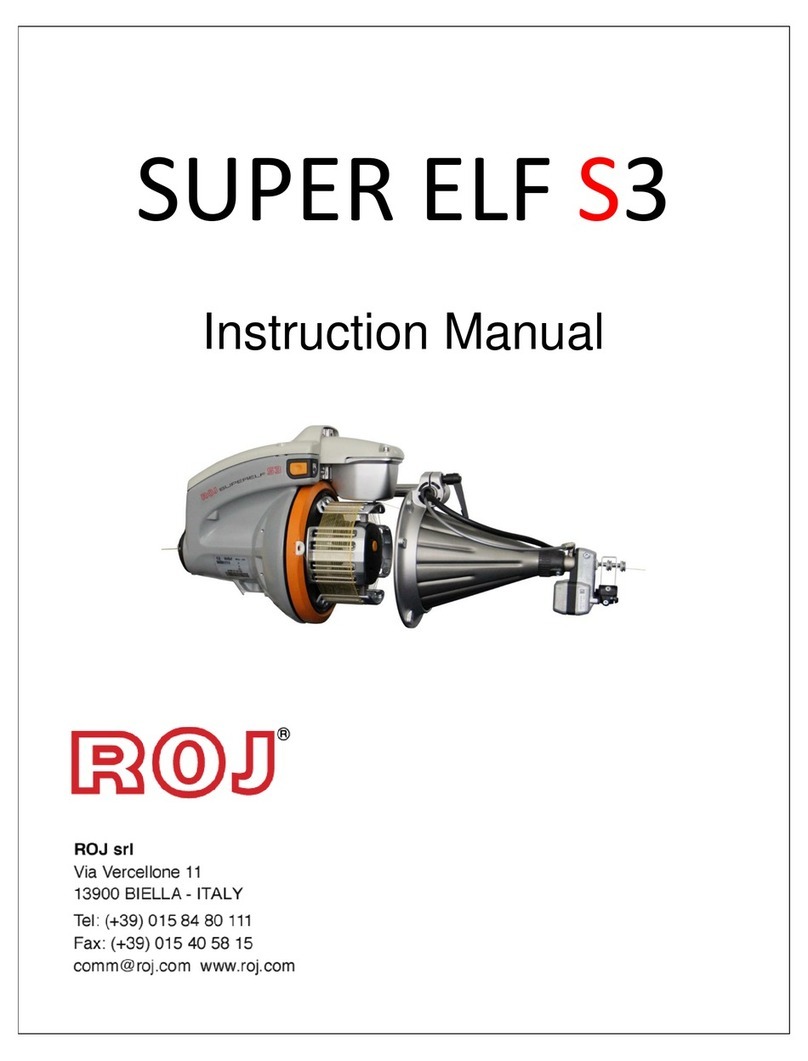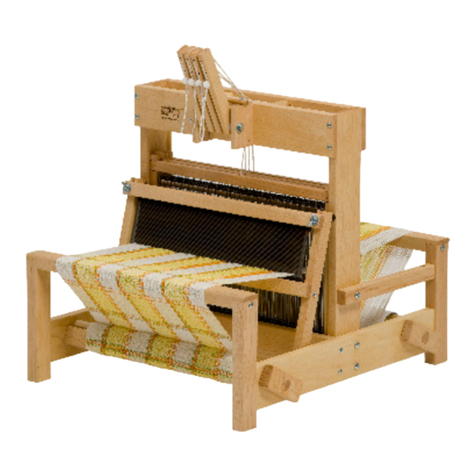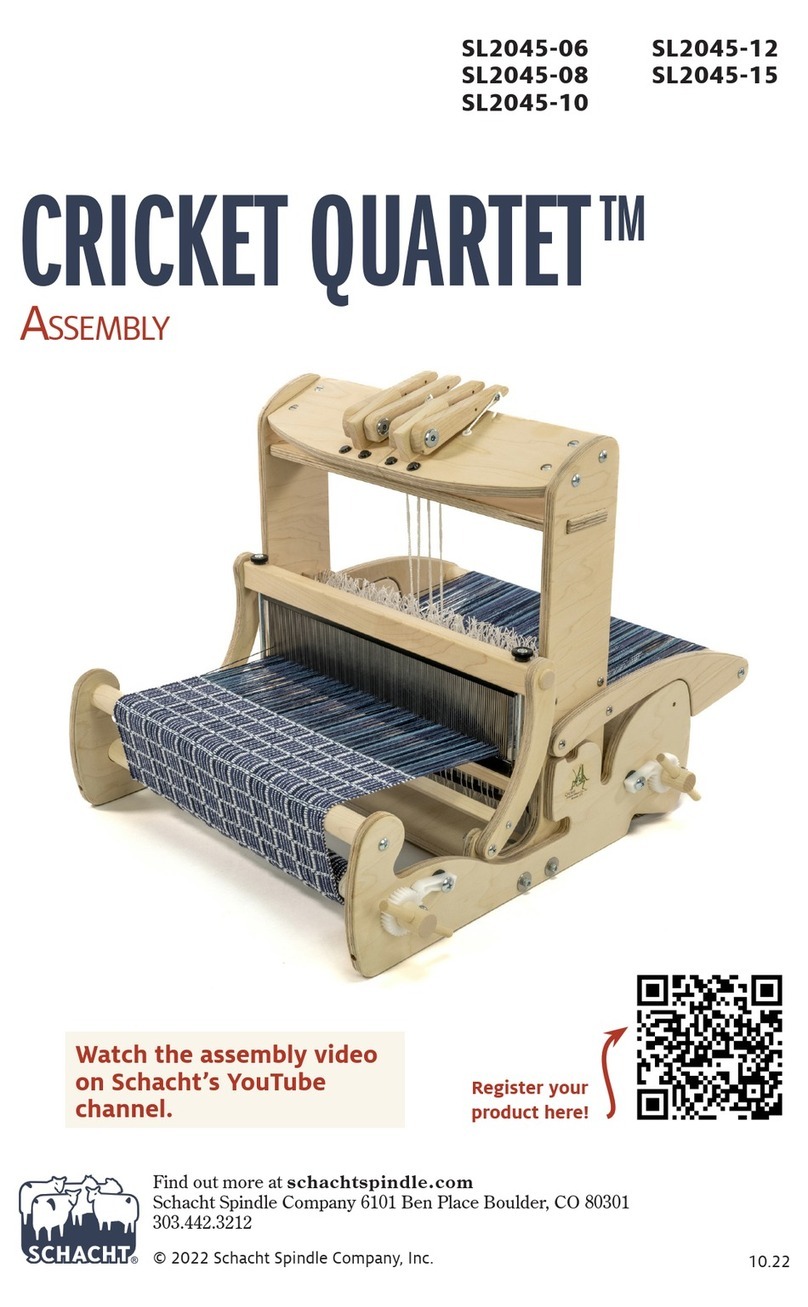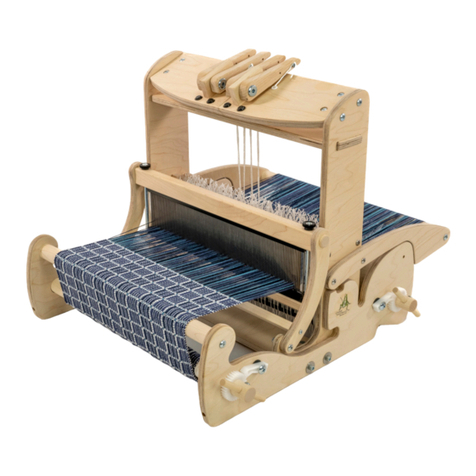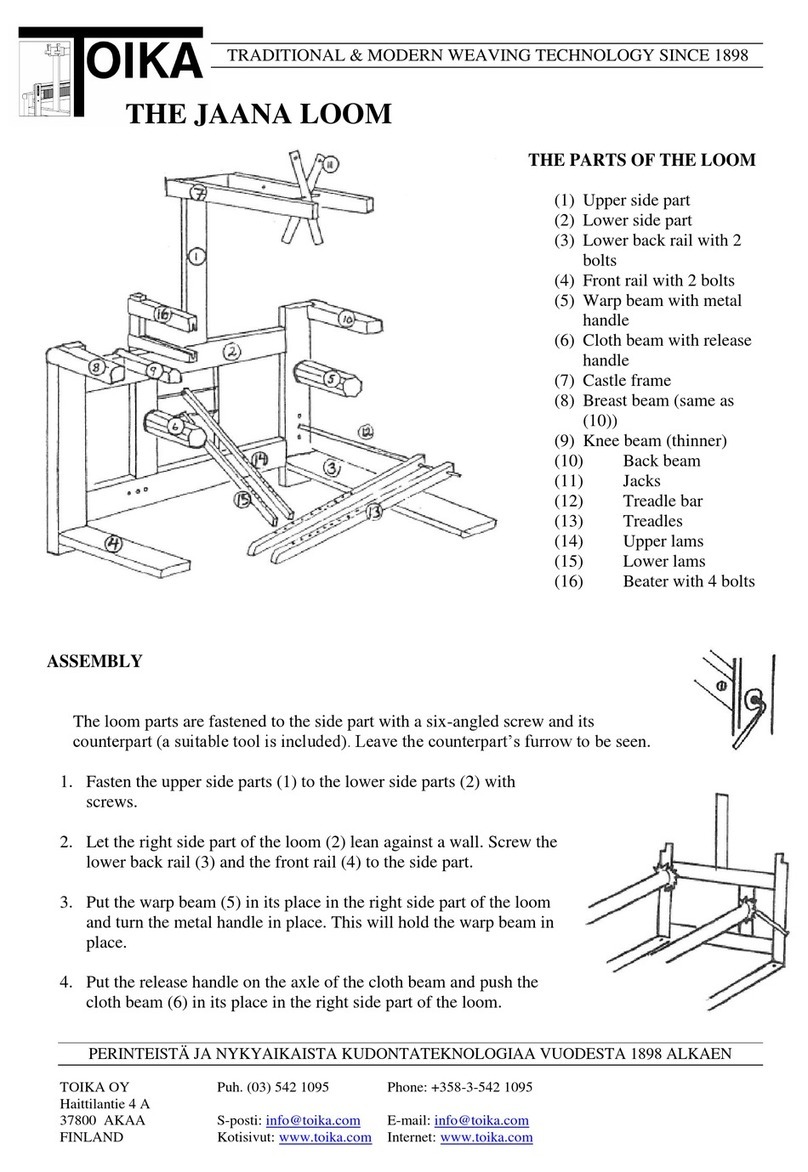2
Welcome to your new David III loom
We know you’re going to love your new David! Louët is dedicated to bringing you the most comfortable and
enjoyable weaving experience. This manual provides you with step-by-step assembly instructions.
David III, the third generation David looms from Louët has been improved in many ways. The mechanical method
of making the shed has also been improved: The shaft height is more precise and easier to adjust and the
progressive shed has been improved by modifying the tie-up method. The tie-up to the treadles is the same as the
David II; only the shafts being pulled downward are tied, but the shed of the David has similarities with a counter
march shed.
Unique shaft movement system
In the rest position, all shafts and therefore the entire warp are pulled up by springs. Depressing a treadle pulls
down the attached shafts and with them part of the warp. When the treadle is pressed, the springs of the
attached shafts are stretched. More force is required as you stretch a spring, however with the David, that extra
force goes through the unique cams that during their rotating movement ensure that that force decreases as the
shafts continue down. You will notice this half way through the treadle stroke. The result is that in their highest
position, shafts are pulled up considerably and when you depress a treadle you notice the opposite of what you
would expect: The further you push on a treadle, the lighter it gets and the weight of your leg is sufficient to keep
the shed open.
The David has the shed of a counter march, but not the disadvantage of double tie-ups (all treadles to all shafts).
Moreover, the tie-ups are easy to attach: The cords remain permanently on the lams and can then be moved
above the treadle, where you then only have to hook the cord onto the screw head.
Overview hardware types and assembly tips and information
Barrel nuts:
For the assembly of the looms, we use barrel nuts and bolts to connect two parts. These cylinder-
shaped nuts have a slot on one of the flat sides, that show the direction of the threaded hole in
the nut. Always insert the barrel nut into the wooden part, so that the slot in the barrel nut is
visible. With a flat head screwdriver you can turn the barrel nut so that it is positioned properly
to catch the bolt. If you have a problem inserting the bolt into the barrel nut, try turning the
barrel nut 180 degrees, which usually helps to resolve the issue.
Carriage bolts:
In other locations, we use carriage bolts for assembly. These bolts have a square
enlargement (neck) under the head. When you tighten the nut on the bolt, this square
neck locks into the wood to prevent the bolt from turning. In some instances, you will
notice, that the bolt is just a little too short for assembly with the washer and nut. To
resolve this, screw on the nut without the washer to pull the square neck into the wood.
Now unscrew the nut, install the washer and then replace and secure the nut again,
tightly. Alternatively, you can tap against the bolt head with a hammer, until the bolt
head is secured into the wood.
Lag bolts:
These are bolts with a wood thread, but with the hex head of a regular bolt.
Wood screws:
Where wood screws are used, we have pilot holes in the wood. It is important to position the screws in the pilot
holes for proper assembly and operation of the loom. Because the screws are sharp, they can unintentionally cut
into the wood if used outside of the pilot hole. A screw that is very difficult to turn is usually a sign that you have
either mis-positioned the screw or are using the incorrect size. Go back and check the hardware to see if you have
selected the wrong screw for that particular assembly.
When re-inserting a screw that has been removed, it is important that the screw returns to the thread it cut
earlier. Otherwise, the connection would lose its strength after a few times. Finding the old thread is easy: Push
the screw into the hole, turning it counterclockwise. Stop when a light tap indicates that the screw “falls” into its
